-
 1098 Hits
1098 Hits
-
 81.18% Score
81.18% Score
-
 13 Votes
13 Votes
|
|
Mountain/Rock |
|---|---|
|
|
39.72507°N / 21.61763°E |
|
|
Trad Climbing |
|
|
Spring, Summer |
|
|
1804 ft / 550 m |
|
|
Overview
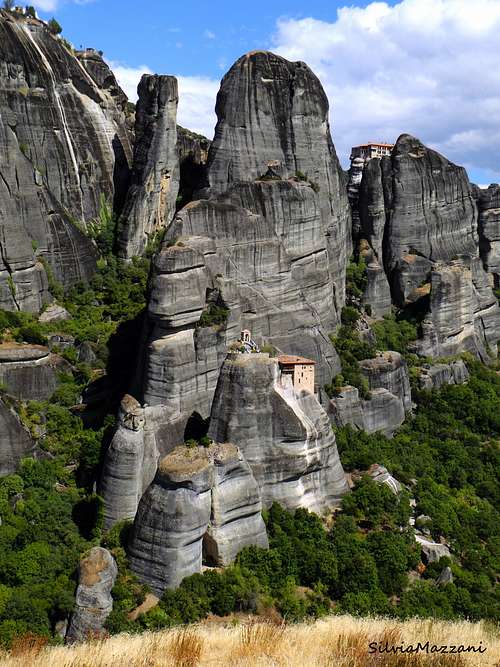
Ypsiloterafels
Ypsiloterafels is one of the best rock climbing destination in the Meteora (Μετέωρα) area, a charming and suggestive climbing site located in the Thessaly region of Greece. It's a mighty and attractive tower located in the Meteora Western Group and it's one of the most characteristic rocks of this sector. This beautiful tower is located near the Teufelsturm (Devils Tower), a little hidden behind the monastery of Agios Nikolaos Anapafsas. Ypsiloterafels counts several high quality multi-pitch routes on its South face and offers great views of the surrounding monasteries and towers.
The most famous climb is Himmelsleiter, meaning "Ladder to heaven" in English and was climbed first by Heinz Lothar Stutte and Otto Scheda in 1982. Westkante (West ridge) was the first ascent of Ypsiloterafels in the year 1976.
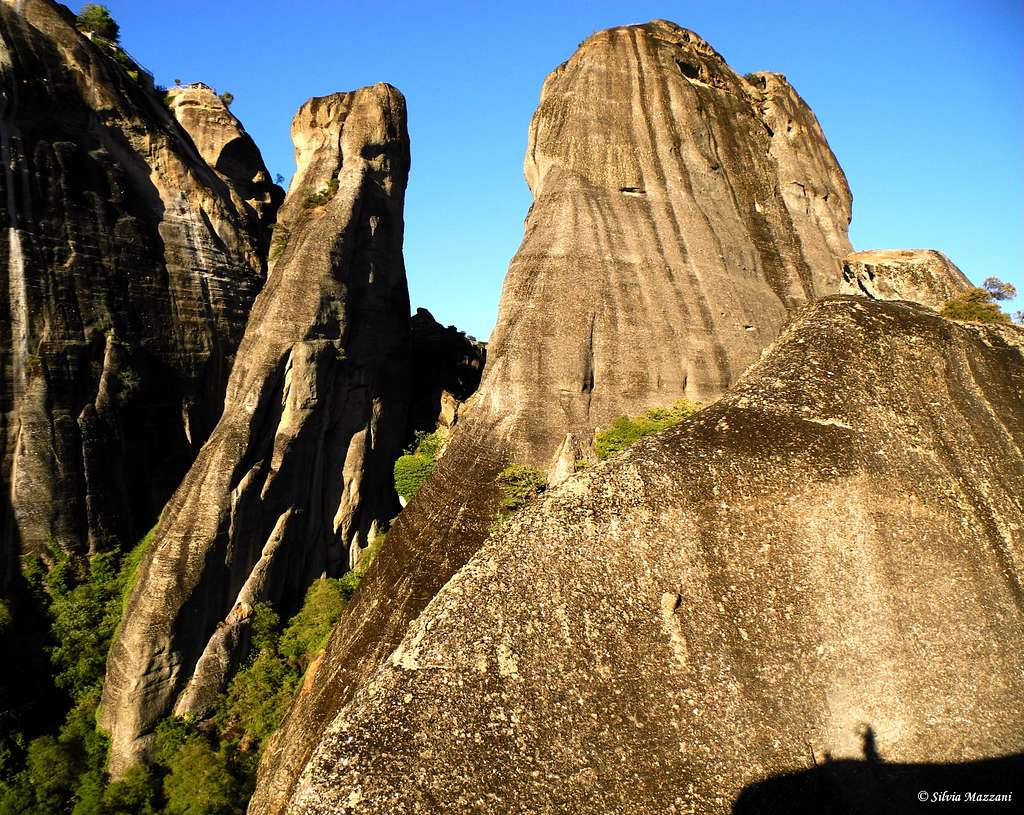
Getting There
Meteora is situated in the Thessaly region of Greece, Northern half of Greece, approximately 25 km NNW from Trikala, and immediately North of Kalambaka and Kastraki, the two main towns in the area, both located very close to the rocks. The closest main town is Larissa. The distance to Kalambaka is about 360 km from Athens and 237 km. from Thessaloníki.
By plane - Meteora can be approached from Athens Eleftherios Venizelos airport or from Thessaloniki airport. From these airports you can:
- take a domestic flight to Larissa (about 85 km from Kalambaka) - rent a car, useful once you are in Kastraki, but not essential, then 4 hour drive to Kalambaka on a new highway. - use public transports (bus or train). Getting to Meteora without a car is easy thanks to the train from Athens that stops in Kalambaka.
By ferry from Italy – If you wish to travel with your own car, there are different shipping companies and many ferries departures to Igoumenitza from the harbours of Ancona, Bari and Brindisi across the Adriatic.Then a mountain road to the small town of Kalambaka at the foot of the wonderful Meteora.
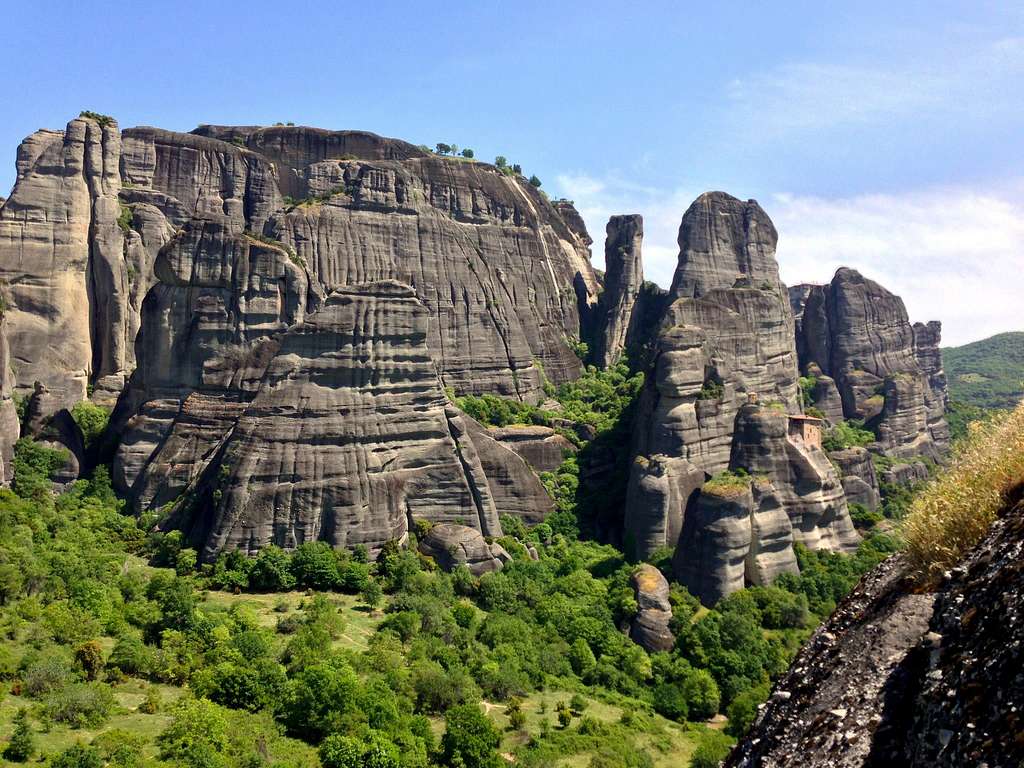
Appreoach to Ypsiloterafels
The approach trail starts along the road just past Doupianifels under a shaded parking lot. From here walk up the road and take to the left a dirt double track. After about 100 m look for a path heading right towards Ypsiloterafels. Stay on this trail until it forks and take the right branch heading uphill.
Routes
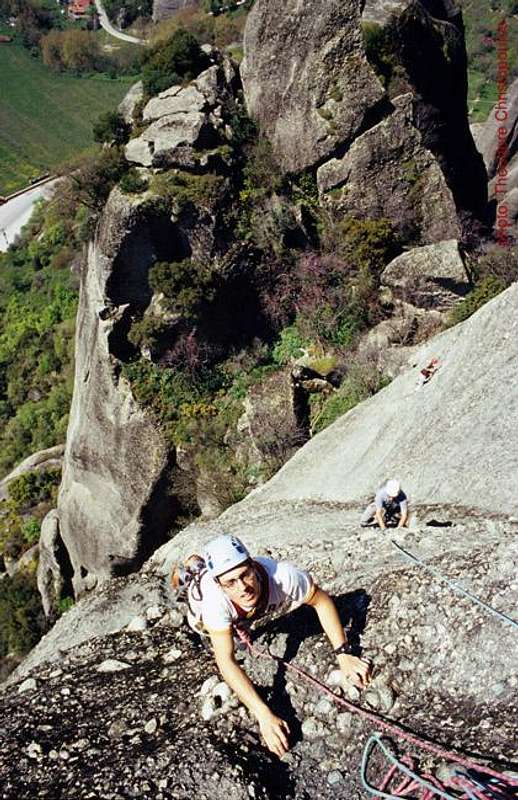
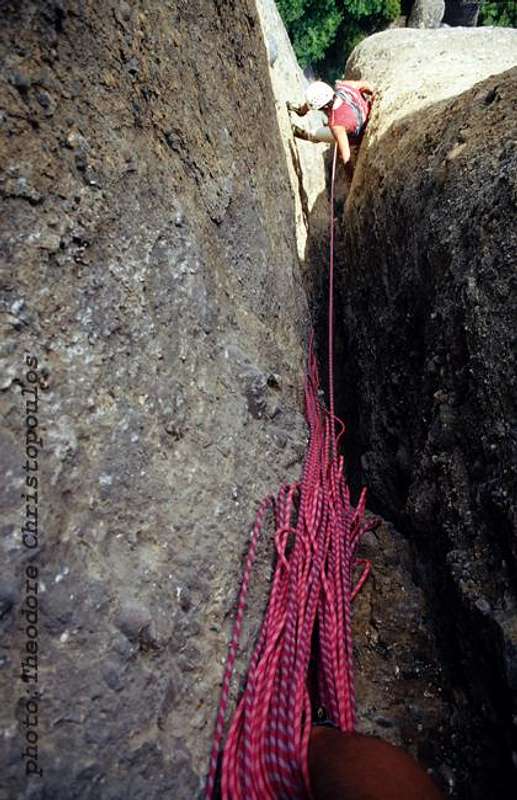
- Westkante (West ridge) V and A0, or VI-, 120 m, 5 pitches - D. Hasse, F. Maschke, H.L. Stutte 1976
- Westkante direct III, 75 m, 2 pitches, H.L. Stutte, D. Hasse 1977
- Missing Link VI+, 115 m, 4 pitches - H. Weninger, A. Weninger, I. Weninger, O. Weninger, C. Heiner, H. Antz, W, Antz, C. Hartmann, S. Werderitz 1986
- Danae VII-, 125 m, 4 pitches - A. Theodoropoulos, D. Karalis 1997
- Himmelsleiter VI, 115 m, 3 pitches - H. L. Stutte, O. Scheda 1982 6a,5c,4b A popular direct line on excellent rock. The line of three rappels goes almost down the route Apollofalter (Apollo Butterfly) and you will see new bolts all the way down
- Apollofalter V-, 145 m, 5 pitches - U. Daigger, H. Daigger 1981
- Talweg V, 230 m, 7 pitches - C. Delibaltas, A. Mitronatsios 1985
Descent: line of three rappels goes almost down the route Apollofalter
Red Tape
No fees and no permits required. Anyhow, if you are visiting this area, remember not to climb on rock formations with inhabited monasteries. In the Seventies Dietrich Hasse and his team decided, in agreement with local authorities, not to climb any route on these latter rock formations. This rule applies even today. Please preserve all other historical remains. Another important suggestion is not to add fixed protections on the classic routes to the pre-existing ones. If you plan to visit the monasteries, keep in mind to be appropriately dressed: men cannot wear shorts, while women must wear long skirts and not trousers, arms must be covered. Since the year 1988 Meteora was declared a Meteora Unesco World Heritage Site .
When to Climb
Spring and Autumn are the best seasons for Meteora. Virtually you could climb all year round (snowfalls are rare), with the warning that summer is really very hot and in winter the temperatures may be unpleasant, unless you are very lucky. The best months are late March, April, May, September, October and November.
Accomodation
There is a great number of hotel rooms, B&Bs and rooms to rent in the village of Kastraki, the village built in the shadow of the Meteora towers. The nearby town of Kalabaka also features many accomodation choices. There are also three organized campsites, amongst which the nearest one to the crags is the Camping Vrachos in Kastraki. There is also a smaller campsite near the tower of Doupiani. There are plenty of eating out options, particularly tasty traditional Greek food and pizzerias, both in Kastraki and Kalambaka.
Meteo
Guidebooks

“Meteora – Climbing and hiking” by Dietrich Hasse and Heinz Lothar Stutte - I edition 1986, in English and German. It contains around 230 routes. Also, it provides general information about mountaineering, hiking in Meteora, maps, directions.
The second guidebook is:

“Meteora Climbing Part II” by the same Heinz Lothar Stutte and Dietrich Hasse – II edition 2000 – German, Greek and English - Note: the II edition is not a complete guidebook, but an update to the I edition
The Meteora guidebooks can be purchased in Kastraki, Taverna Paradisos or Camping Vrachos. There is also a useful map by the same authors that can be purchased in local shops in Kastraki.
Map
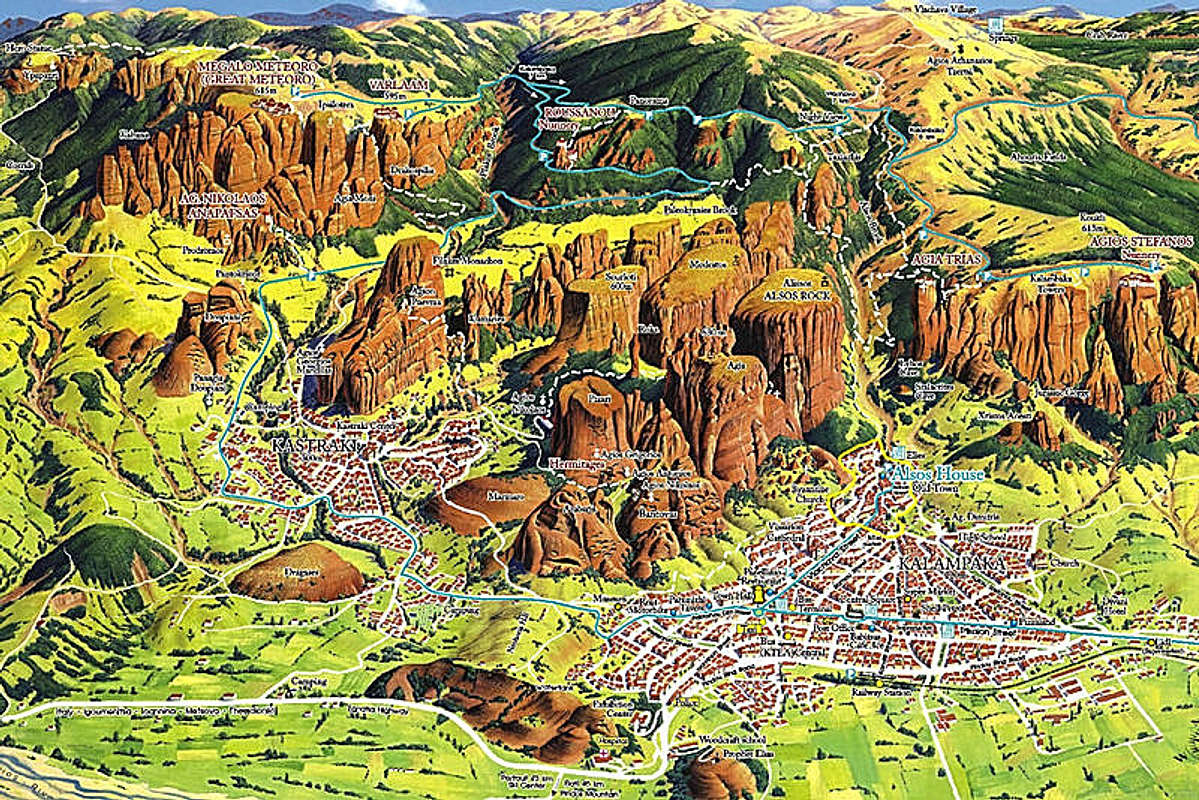
External links
Climbing web-sites:
- Climbgreece
- Climb-Europe Greece/Meteora
- Meteora-rock-climbing
The site of Jörg Brutscher, one of the German climbers, who first climbed many hard cracks in Meteora. Unfortunatelly his site is only in german.
Also by Jörg Brutscher, check : www.sandsteinklettern.de. In german only, but with a lot of information. Click on Wegedatenbank, then Griechenland. There are a lot of routes and very good drawings/maps of the various rock groups. Some very interesting climbing photos from Meteora, Elb and other places.
The site www.routes.gr is the best database of mountain climbing routes in Greece. Unfortunatelly has only a few, mainly new, routes from Meteora in this link: www.routes.gr/?Lang=en&Page=Climbing/Trad/Areas/Meteora
Other info here:
The site of Kalambaka town: www.kalampaka.com
The site of the Hellenic Mountain Guide Association.

